![]()
![]()
![]()
Use LEFT and RIGHT arrow keys to navigate between flashcards;
Use UP and DOWN arrow keys to flip the card;
H to show hint;
A reads text to speech;
76 Cards in this Set
- Front
- Back
- 3rd side (hint)
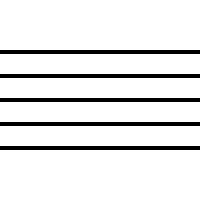
|
Staff
|
The fundamental latticework of musical notation, upon which symbols are placed.
|
|
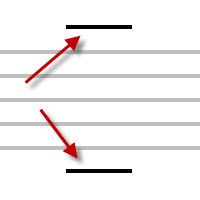
|
Ledger Lines
|
Used to extend the staff to pitches that fall above or below it.
|
|

|
Bar Line
|
Used to separate measures
|
|
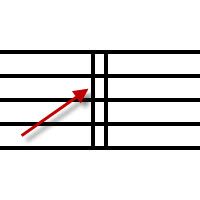
|
Double Bar Line
|
Used to separate two sections or phrases of music; also used at changes in key signature or major changes in style or tempo.
When bold, it indicates the conclusion of a movement or an entire composition. |
|

|
Accolade / Brace
|
Connects two or more lines of music that are played simultaneously
|
|
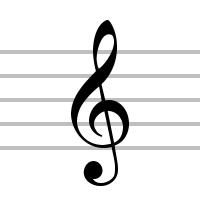
|
Treble Clef
|
(also known as the G clef)
|
|
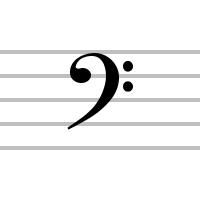
|
Bass Clef
|
(also known as the F clef)
|
|
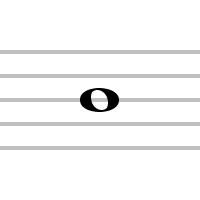
|
Whole Note
|
In 4/4 (“common”) time, this note is equal to four quarter notes.
|
|

|
Half Note
|
In 4/4 (“common”) time, this note is equal to two quarter notes
|
|
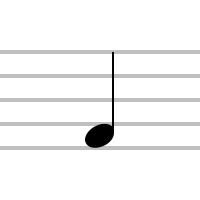
|
Quarter Note
|
In 4/4 (“common”) time, four of these notes make a full measure
|
|
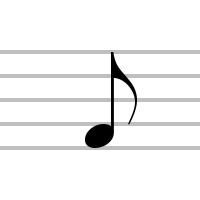
|
Eighth Note
|
In 4/4 (“common”) time, two of these notes equal one quarter note
|
|
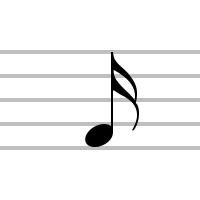
|
Sixteenth Note
|
In 4/4 (“common”) time, four of these notes equals one quarter note
|
|
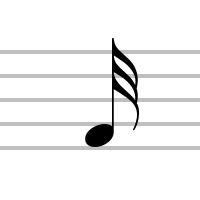
|
Thirty-Second Note
|
In 4/4 (“common”) time, 8 of these notes equals one quarter note
|
|
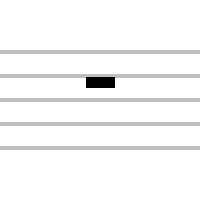
|
Whole Rest
|
Indicates silence in music for the duration equivalent to a whole note
|
|

|
Half Rest
|
Indicates silence in music for the duration equivalent to a half note
|
|
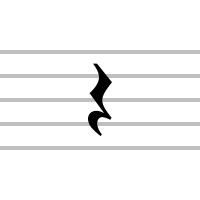
|
Quarter Rest
|
Indicates silence in music for the duration equivalent to a quarter note
|
|

|
Eighth Rest
|
Indicates silence in music for the duration equivalent to an eighth note
|
|
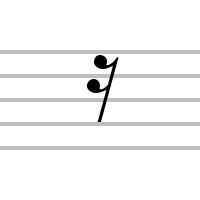
|
Sixteenth Rest
|
Indicates silence in music for the duration equivalent to a sixteenth note
|
|
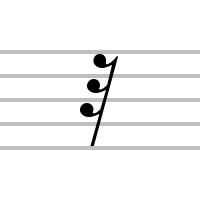
|
Thirty-Second Rest
|
Indicates silence in music for the duration equivalent to a thirty-second note
|
|
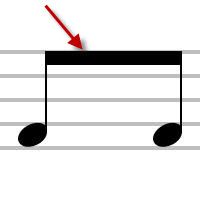
|
Beam (Beamed Notes)
|
Connect eighth notes and notes of shorter value. They reflect the natural rhythmic grouping of notes.
The exact rules vary based on the composer’s preference. |
|
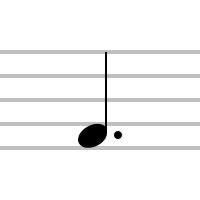
|
Dot (Dotted Note) |
Placing these to the right of a note lengthens the note’s duration.
It lengthens the note by one-half of the note’s value. |
|
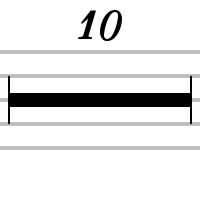
|
Multi-Measure Rest
|
Indicates the number of measures in a resting part, used to conserve space and to simplify notation.
Not frequently seen in solo piano music, but common in ensembles or accompanied pieces. |
|
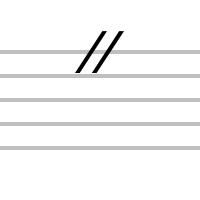
|
Caesura / Grand Pause / “Railroad Tracks”
|
Indicates a brief, silent pause, during which time is not counted.
In ensemble playing, time resumes when so indicated by the conductor or leader; used for dramatic effect. |
|
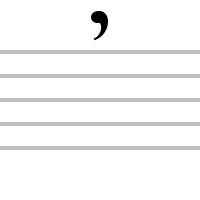
|
Breath Mark
|
In a score, this symbol tells the performer to take a breath (or make a slight pause for
non-wind instruments). This pause usually does not affect the overall tempo. |
|
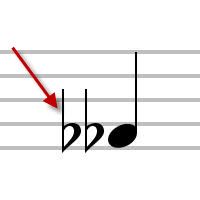
|
Double Flat
|
An “accidental,” this symbol lowers the pitch of a note by two half-steps
|
|
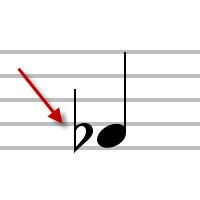
|
Flat Note
|
An “accidental,” this symbol lowers the pitch of a note by one half-step
|
|
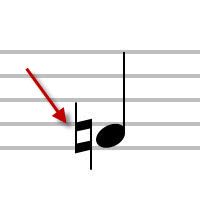
|
Natural
|
Cancels a previous accidental, or modifies the pitch of a sharp or flat as defined by the prevailing key signature (for example, making an F-sharp into an F-natural in the key of
G Major) |
|
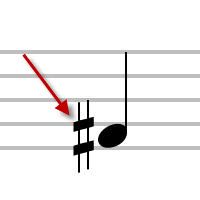
|
Sharp
|
An “accidental,” this symbol raises the pitch of a note by one half-step
|
|
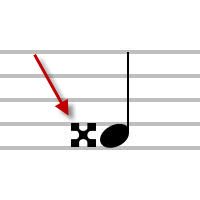
|
Double Sharp
|
An “accidental,” this symbol raises the pitch of a note by two half-steps
|
|
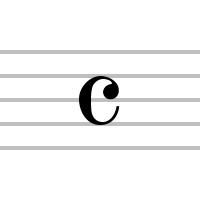
|
Common Time
|
This is an alternate way to write 4/4 time signature.
|
|
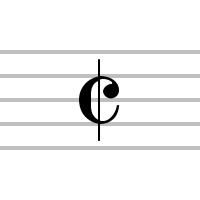
|
Cut Time
|
This is an alternate way to write 2/2 time signature.
|
|
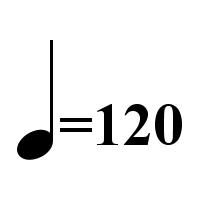
|
Metronome Mark
|
Written at the start of a score, and at any significant change of tempo; it defines precisely the tempo of the music by assigning absolute durations to all note values within the score.
|
|

|
Tie
|
Indicates that the two notes joined together are played as one note.
This can also indicate a note sustained over two or more measures. |
|
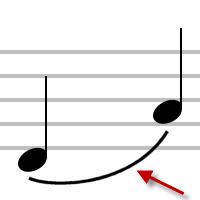
|
Slur
[Note: Slurs and Ties are similar in appearance. A tie is distinguishable because it always joins exactly two immediate adjacent notes of the same pitch, whereas a slur may join any number of notes of varying pitches.] |
Indicates that the two notes are to be connected into a phrase as if played in a single breath
|
|
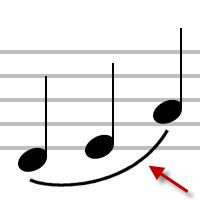
|
Legato
|
Notes covered by this sign are to be played with no gaps.
Sometimes indistinguishable from a slur. |
|
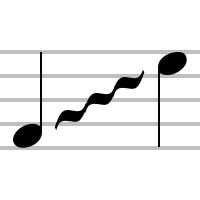
|
Glissando (Portamento) |
A continuous, unbroken glide from one note to the next that includes the pitches between.
|
|
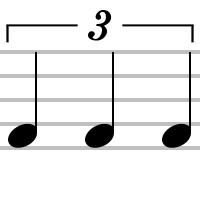
|
Tuplet |
A number of notes of irregular duration are performed within the duration of a given number of notes of regular time.
In normal language, this means you fit three notes into the space of four, seven notes into the space of two, etc. |
|

|
Chord |
Several notes sounded simultaneously
|
|
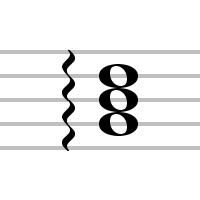
|
Arpeggiated Chord
|
A chord with notes played in rapid succession, usually ascending, each note being sustained as the others are played.
|
|

|
Pianississimo
|
Dynamic marking meaning “extremely soft.” Very infrequently will you see softer dynamics than this.
|
|
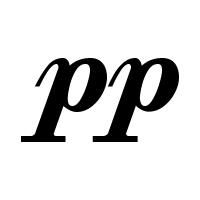
|
Pianissimo
|
Dymanic marking meaning “very soft.”
Usually the softest indication in a piece of music. |
|
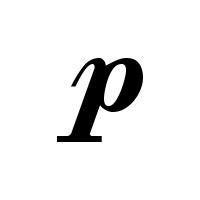
|
Piano
|
Dynamic marking meaning “soft.”
|
|
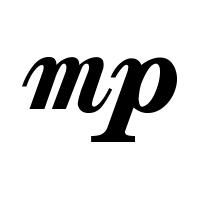
|
Mezzo Piano
|
Dynamic marking meaning, literally, half as soft as piano
|
|
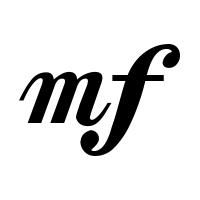
|
Mezzo Forte |
Dynamic marking meaning, literally, half as loud as forte.
|
|
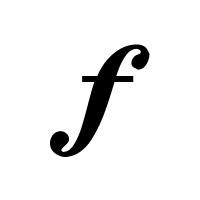
|
Forte
|
Dynamic marking meaning “loud.”
|
|
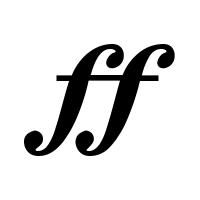
|
Fortissimo
|
Dynamic marking meaning “very loud.”
Usually the loudest indication in a piece of music. |
|

|
Fortississimo
|
Dynamic marking meaning “extremely loud.”
Very infrequently will you see louder dynamics than this. |
|
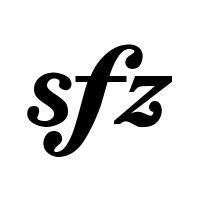
|
Sforzando
|
Dynamic marking meaning, literally, “forced.”
Denotes an abrupt, fierce accent on a single sound or chord. |
|
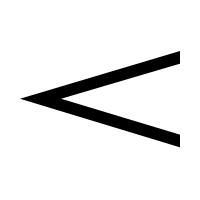
|
Crescendo
|
A gradual increase in volume
Can be extended under many notes to indicate that the volume steadily increases during the passage. |
|
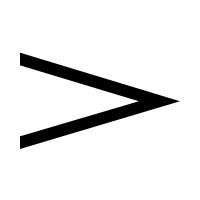
|
Decrescendo / Diminuendo
|
A gradual decrease in volume
Can be extended under many notes to indicate that the volume steadily decreases during the passage. |
|
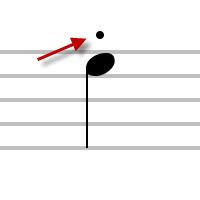
|
Staccato
|
Articulation mark indicating that the note is to be played shorter than notated, usually half the value, the rest of the metric value is then silent.
May appear on notes of any value, thus shortening their actual performed duration without speeding up the music itself. |
|
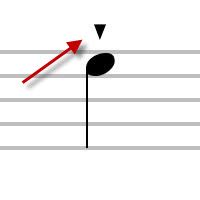
|
Staccatissimo
|
Articulation mark indicating a longer silence after the note than even a staccato, making the note very short.
Usually applied to quarter notes or shorter. Sometimes used interchangeably with staccato. |
|
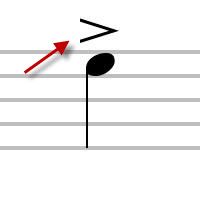
|
Dynamic Accent
|
Articulation mark indicating the note is played louder or with a harder attack than any surrounding unaccented notes.
May appear on notes of any duration. |
|
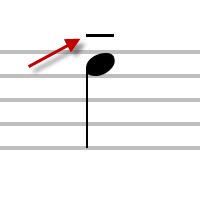
|
Tenuto
|
This symbol has several meanings.
It usually indicates that it be played for its full value, or slightly longer. It may indicate a separate attack on the note, or may indicate legato, in contrast to the dot of staccato. Combining this with a staccato dot indicates a slightly detaching ("portato" or "mezzo staccato"). |
|
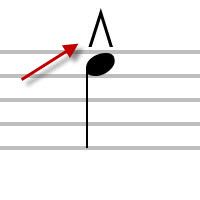
|
Marcato
|
The note is played much louder or with a much stronger attack than any surrounding unaccented notes. May appear on notes of any duration.
|
|
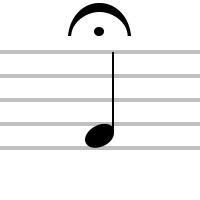
|
Fermata (Pause)
|
An indefinitely-sustained note or chord. Usually appears over all parts at the same metrical location in a piece, to show a halt in tempo. It can be placed above or below the note.
|
|
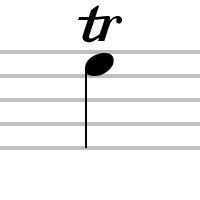
|
Trill
|
An "ornament," this symbol indicated a rapid alternation between the specified note and the next higher note (according to key signature) within its duration.
When followed by a wavy horizontal line, this symbol indicates the effect is to be extended. In much music, the this effect begins on the upper auxiliary note. |
|
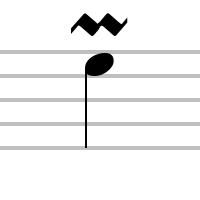
|
Mordent
|
An "ornament," this symbol instructs the performer to rapidly play the principal note, the next higher note (according to key signature) then return to the principal note for the remaining duration. In much music, the effect begins on the auxiliary note, and the alternation between the two notes may be extended.
|
|

|
Inverted Mordent
|
An "ornament," this symbol instructs the performer to rapidly play the principal note, the semitone below it, then return to the principal note for the remaining duration. In much music, the effect begins on the auxiliary note, and the alternation between the two notes may be extended.
|
|

|
Turn
|
When placed directly above the note, this symbol indicates a sequence of upper auxiliary note, principal note, lower auxiliary note, and a return to the principal note.
|
|
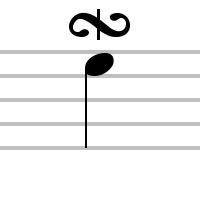
|
Inverted Turn
|
When placed directly above the note, this symbol indicates a sequence of lower auxiliary note, principal note, upper auxiliary note, and a return to the principal note.
|
|
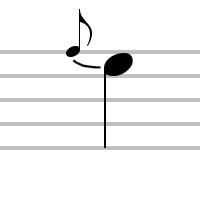
|
Appoggiatura
|
The first half of the principal note's duration has the pitch of the small note.
|
|
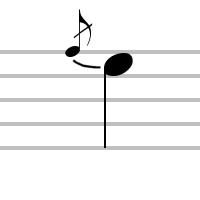
|
Acciaccatura (Grace Note)
|
The small note is of very brief duration, as though brushed on the way to the principal note, which receives virtually all of its notated duration.
|
|
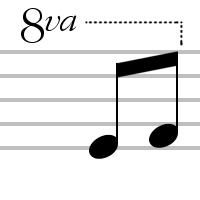
|
Ottava alta
|
Notes below the dashed line are played one octave higher than notated.
|
|

|
Ottava bassa
|
Notes below the dashed line are played one octave lower than notated.
|
|
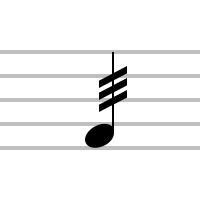
|
Tremolo
|
A rapidly-repeated note. If the it is between two notes, then they are played in rapid alternation.
The number of slashes through the stem (or number of diagonal bars between two notes) indicates the frequency at which the note is to be repeated (or alternated). As shown here, the note is to be repeated at a thirty-second note rate. |
|
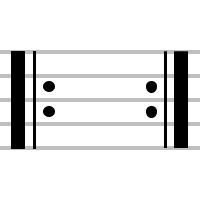
|
Repeat Signs
|
Enclose a passage that is to be played more than once. If there is no left one, the right one sends the performer back to the start of the piece or the nearest double bar.
|
|
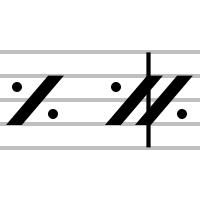
|
Simile Marks
|
Denote that preceding groups of beats or measures are to be repeated
|
|

|
Volta brackets (1st and 2nd endings)
|
Denote that a repeated passage is to be played in different ways on different playings.
|
|

|
Da capo
|
Tells the performer to repeat playing of the music from its beginning.
This is followed by "al fine," which means to repeat to the word fine and stop, or "al coda," which means repeat to the coda sign and then jump forward. |
|
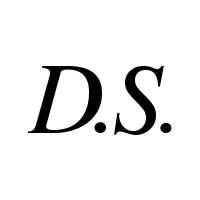
|
Dal segno
|
Tells the performer to repeat playing of the music starting at the nearest "segno," or sign. This is followed by "al fine," which means to repeat to the word fine and stop, or "al coda," which means repeat to the coda sign and then jump forward.
|
|
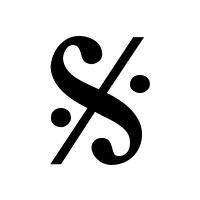
|
Segno (Sign)
|
Mark used with dal segno.
|
|
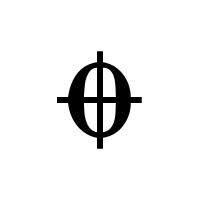
|
Coda |
Indicates a forward jump in the music to its ending passage, marked with the same sign.
|
|

|
Engage Pedal
|
Tells the pianist to put the sustain pedal down.
|
|
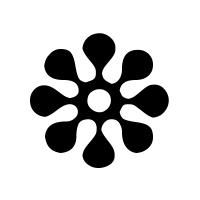
|
Release Pedal
|
Tells the pianist to let the sustain pedal up.
|
|
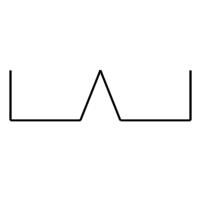
|
Variable Pedal Mark |
More accurately indicates the precise use of the sustain pedal. The extended lower line tells the pianist to keep the sustain pedal depressed for all notes below which it appears. The inverted "V" shape (/\) indicates the pedal is to be momentarily released, then depressed again. |

